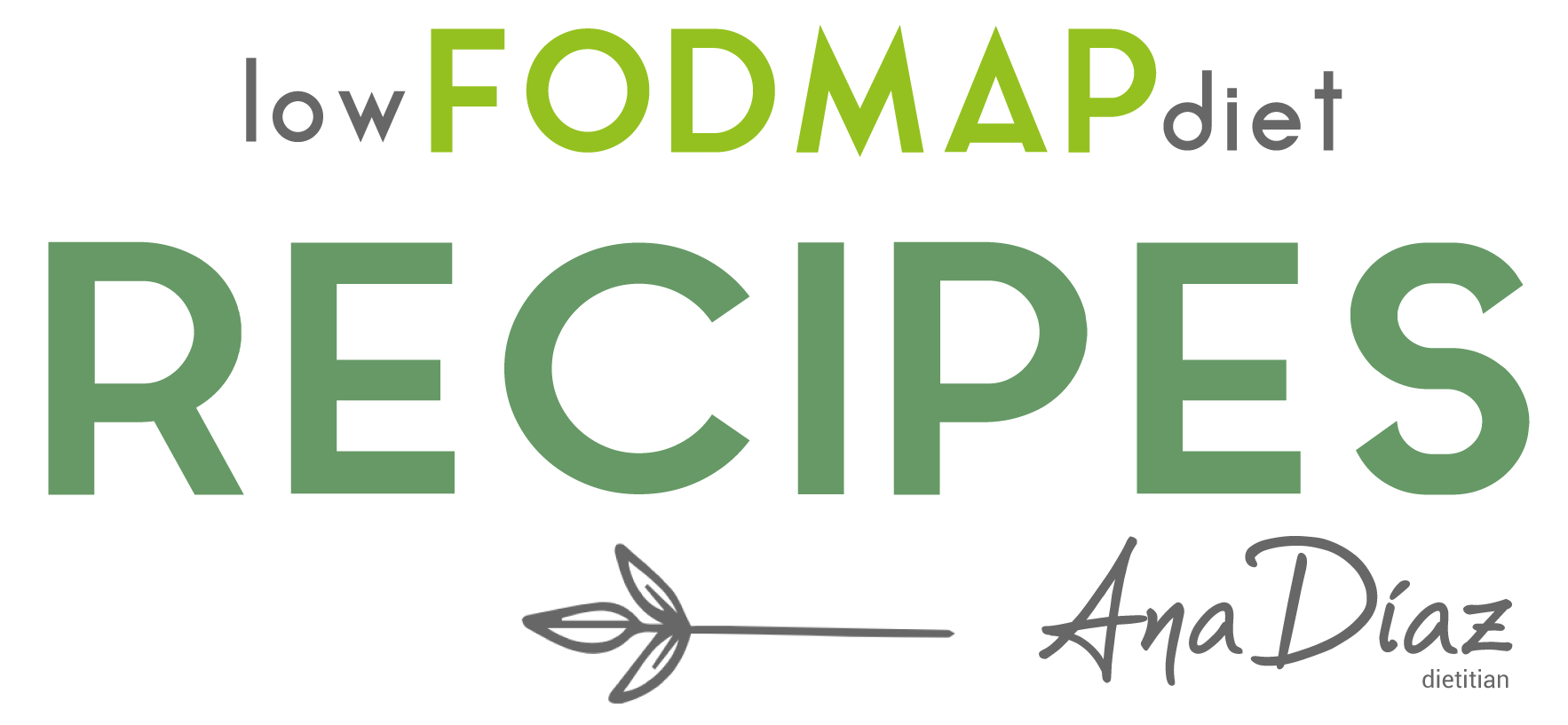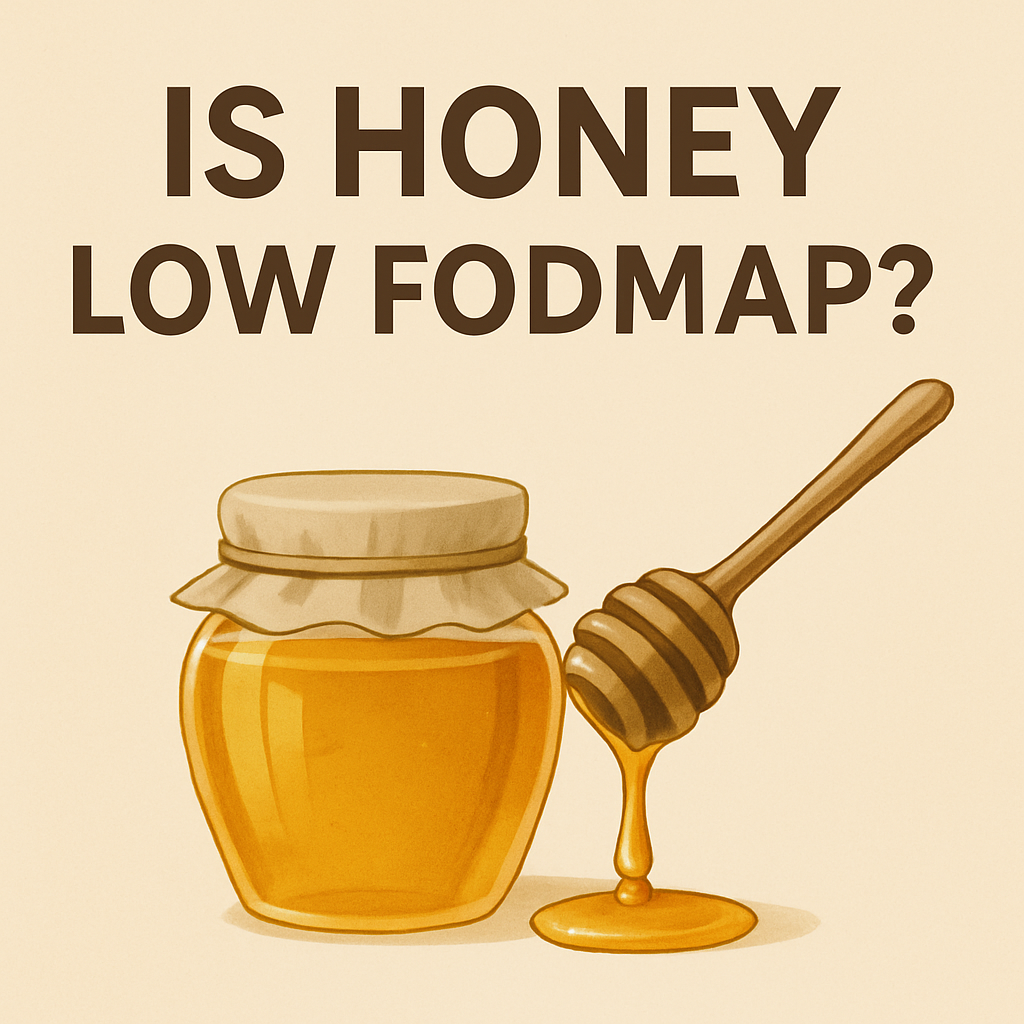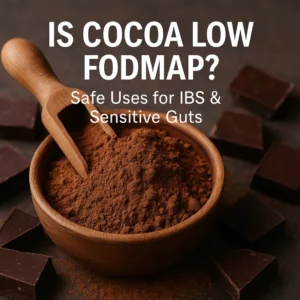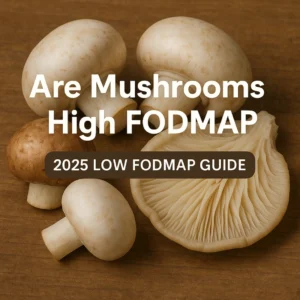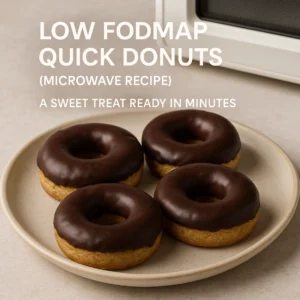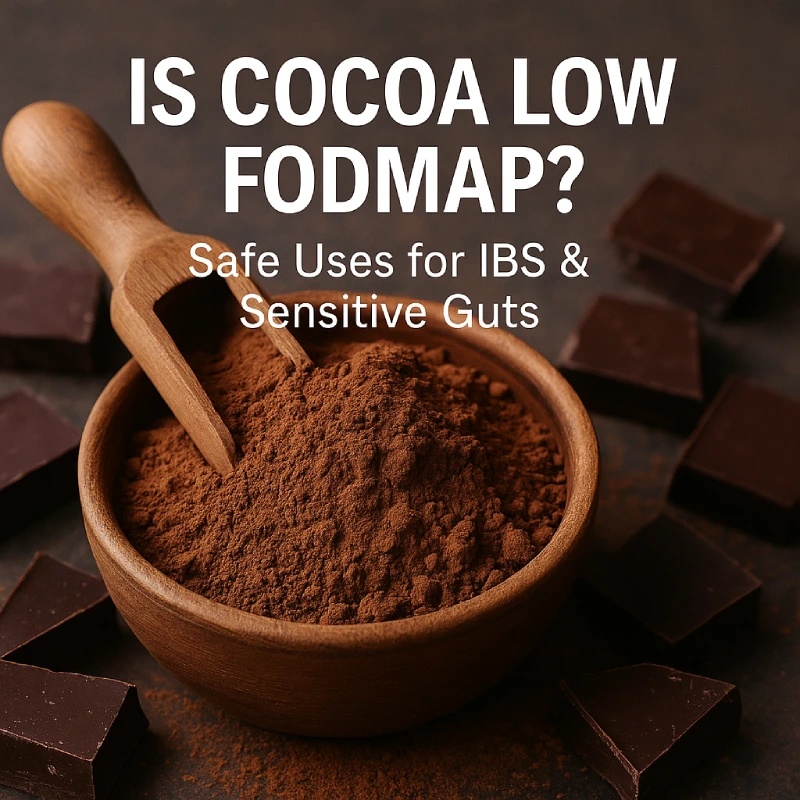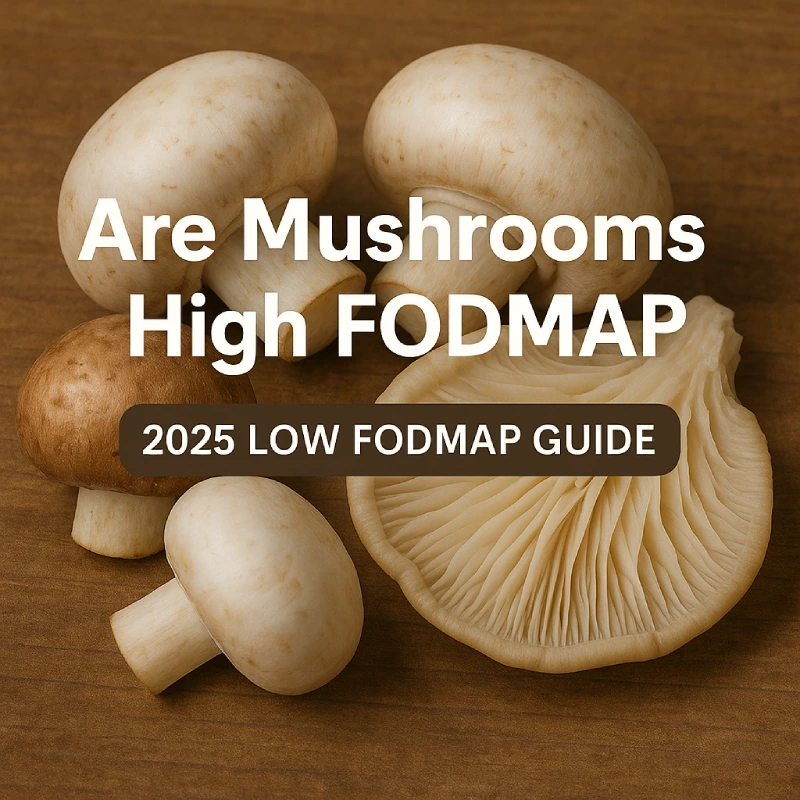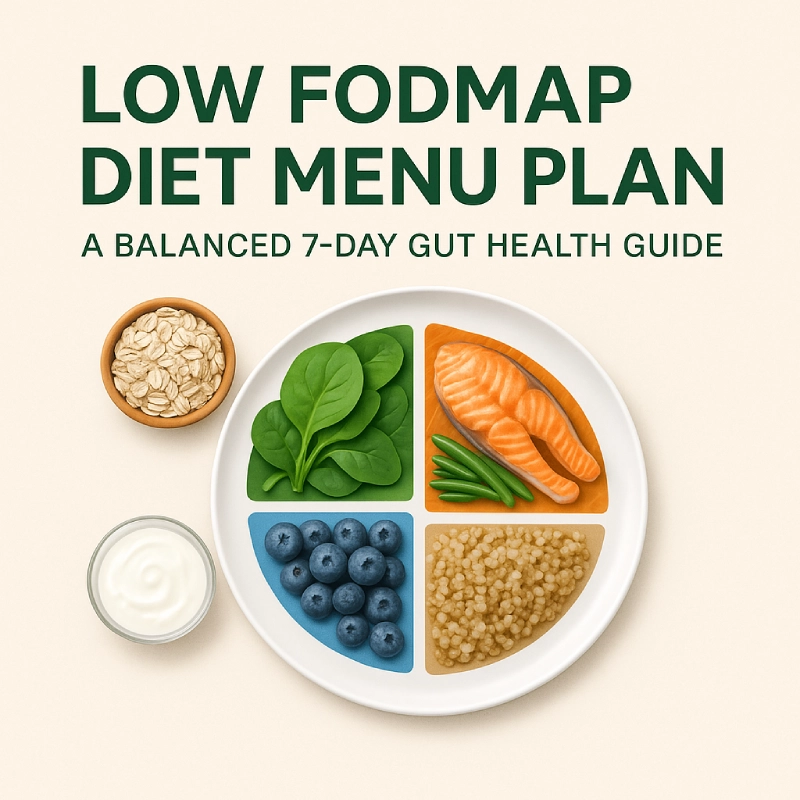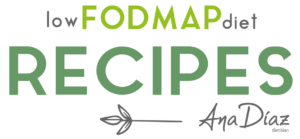Short answer: No, most honeys are not low FODMAP in standard portions. Honey contains both excess fructose and fructans, which can trigger digestive symptoms for people with IBS. However, portion size, honey type, and your individual tolerance all play important roles.
Table of Contents
Understanding FODMAPs and Why Honey Matters
Before diving into the details, let’s remind ourselves what FODMAPs are.
FODMAPs (Fermentable Oligosaccharides, Disaccharides, Monosaccharides and Polyols) are short-chain carbohydrates that can be poorly absorbed in the small intestine. When they reach the colon, gut bacteria ferment them, producing gas and drawing water into the bowel. For sensitive individuals, this can lead to bloating, discomfort, and altered bowel habits.
Honey often comes up in the low FODMAP conversation because it’s a natural sweetener that appears deceptively simple, yet its sugar composition is complex.
What Makes Honey High FODMAP?
The Fructose Factor
Honey’s sweetness comes mainly from fructose, a monosaccharide. When the fructose content exceeds glucose, it becomes excess fructose; a known high-FODMAP component.
According to the latest Monash University 2025 Food Update, honey remains classified as high FODMAP for fructose and fructans at a standard serving. That means even a small spoonful (around 1 tablespoon ≈ 21 g) can provoke symptoms in sensitive individuals.
Fructans: The New Finding
Earlier FODMAP classifications focused mainly on honey’s fructose. But Monash’s new analysis revealed something surprising: honey also contains significant levels of fructans, another group of FODMAPs.
This combination of fructose + fructans makes honey more challenging to tolerate, and explains why some people still experience discomfort even when they limit their portion.
How Much Honey Is Low FODMAP?
The Importance of Portion Size
FODMAPs are dose-dependent. While a standard tablespoon of honey is high FODMAP, tiny amounts may fit within the low FODMAP threshold. Monash’s testing suggests that up to 1 teaspoon (≈ 7 g) of regular honey may be tolerated by some individuals without triggering symptoms, though tolerance varies.
If you’re in the reintroduction or testing phase, start with even smaller quantities (½ teaspoon) and monitor your response over several days.
Different Honeys, Different FODMAPs
Not all honeys are created equal. The FODMAP profile can vary depending on the floral source and processing method.
- Clover honey: typically higher in fructose, therefore more likely high FODMAP.
- Manuka honey: dense and rich in oligosaccharides; best avoided during elimination.
- Rice malt syrup or maple syrup: low FODMAP alternatives when used moderately.
Tip: When checking food labels, remember that honey may appear in unexpected forms such as “invert sugar”, “honey powder”, or “natural sweetener”.
Is Raw or Organic Honey Any Better?
Processing Doesn’t Change FODMAPs
Raw, organic, or unfiltered honey may have added nutritional value (like enzymes or antioxidants), but processing doesn’t alter the FODMAP content. The sugars remain the same, mainly fructose and fructans, so their potential to trigger IBS symptoms is unchanged.
Why It Still Causes Symptoms
Even a natural food can be problematic for people with IBS. When fructose and fructans reach the large intestine, they ferment quickly, producing gas and short-chain fatty acids. This can lead to bloating, pressure, and irregular bowel movements, especially if your gut sensitivity threshold is low.
Individual Tolerance Matters
It’s important not to view FODMAPs as “bad” foods. They are simply foods that your digestive system might not process efficiently. With guidance, you can often reintroduce small amounts once your gut settles. Working with a registered dietitian trained in the low FODMAP approach (ideally Monash-certified) helps you discover your personal limits safely.
Alternatives to Honey on a Low FODMAP Diet
Low FODMAP Sweeteners
If you’re following the low FODMAP plan, try these gentler substitutes:
- Maple syrup: A natural, low FODMAP sweetener at up to 2 tablespoons per serve.
- Rice malt syrup: Contains maltose and glucose, not fructose; usually well tolerated.
- Table sugar (sucrose): Equal parts glucose + fructose; generally safe in moderate amounts.
Avoid agave syrup and high-fructose corn syrup, as both are rich in free fructose.
Natural Sweetness from Fruit
Instead of relying on added sugars, consider low FODMAP fruits for natural sweetness:
- Ripe bananas (firm, not overripe)
- Blueberries or strawberries
- Kiwifruit (also supports gut motility)
- Dates (rich in fiber and natural sweetness) but check recommended amount in this post.
These add flavour and fibre, nourishing your gut microbiota without triggering excess fermentation.
How to Reintroduce Honey Safely
Step-by-Step Approach
- Wait until your symptoms are stable. Only reintroduce honey after completing the elimination phase.
- Start small: ½ teaspoon mixed into warm water or tea.
- Observe for 48 hours for signs like bloating or discomfort.
- Gradually increase to 1 teaspoon, then 1 tablespoon if tolerated.
- Keep a symptom diary to identify your tolerance threshold.
This slow testing helps determine whether fructose, fructans, or both are your personal triggers.
When to Avoid Completely
If you consistently experience discomfort, even with ½ teaspoon, consider omitting honey altogether. People with fructose malabsorption or pronounced IBS symptoms may be especially sensitive.
What Monash University Says (2025 Update)
Monash’s most recent laboratory re-testing confirmed that honey contains high amounts of both fructose and fructans at standard serves. Their findings prompted a revision in the app’s “Fructose Reintroduction” list: honey is no longer recommended for isolated fructose testing, because its dual content could skew results.
Monash recommends that those sensitive to fructose avoid using honey as a test food during the reintroduction phase and instead use mango or freshly squeezed orange juice, which contain fructose without significant fructans.
You can find detailed serving-size guidance on the Monash FODMAP App, the most reliable, continuously updated source for portion information.
Does Honey Have Any Health Benefits?
Despite its high FODMAP status, honey remains a nutritionally interesting food. It provides trace antioxidants, minerals like potassium, and antimicrobial compounds. However, these benefits do not outweigh its potential to cause digestive distress in sensitive people.
If you tolerate small amounts, you can still enjoy honey as part of a balanced, mindful diet; think of it as a natural flavour enhancer rather than a daily staple.
Practical Tips for IBS-Friendly Sweetening
- Read labels carefully. Honey is often hidden in cereals, sauces, marinades, and granola bars.
- Combine glucose with fructose sources. Small studies suggest that balancing fructose intake with glucose (e.g., pairing fruit with white rice or toast) may improve absorption.
- Prioritise gut-soothing foods. Choose soluble-fibre options like oats, chia seeds, and kiwi to help maintain bowel regularity.
- Stay hydrated. Water supports optimal digestion and may ease bloating.
Frequently Asked Questions (FAQ)
Is honey low FODMAP?
No. Standard servings of honey are high FODMAP due to excess fructose and fructans.
Can I have a small amount of honey on the low FODMAP diet?
Some people tolerate up to 1 teaspoon (≈ 7 g), but individual tolerance varies. Always test cautiously.
What’s the best low FODMAP alternative to honey?
Maple syrup and rice malt syrup are both suitable in moderate quantities.
Does honey have any gut-healing benefits?
While honey has antimicrobial and antioxidant properties, its high FODMAP nature can aggravate IBS in many people. Choose other gut-nourishing foods instead, such as kiwifruit and oats.
Can I use honey once I’ve completed the elimination phase?
Yes, if tolerated. Reintroduce it slowly following your dietitian’s guidance.
Summary
If you’re navigating the low FODMAP journey and feel uncertain about which sweeteners suit you, consider booking a session with us (Monash-trained dietitian). Personalised support can help you rebuild food confidence, symptom-free.
